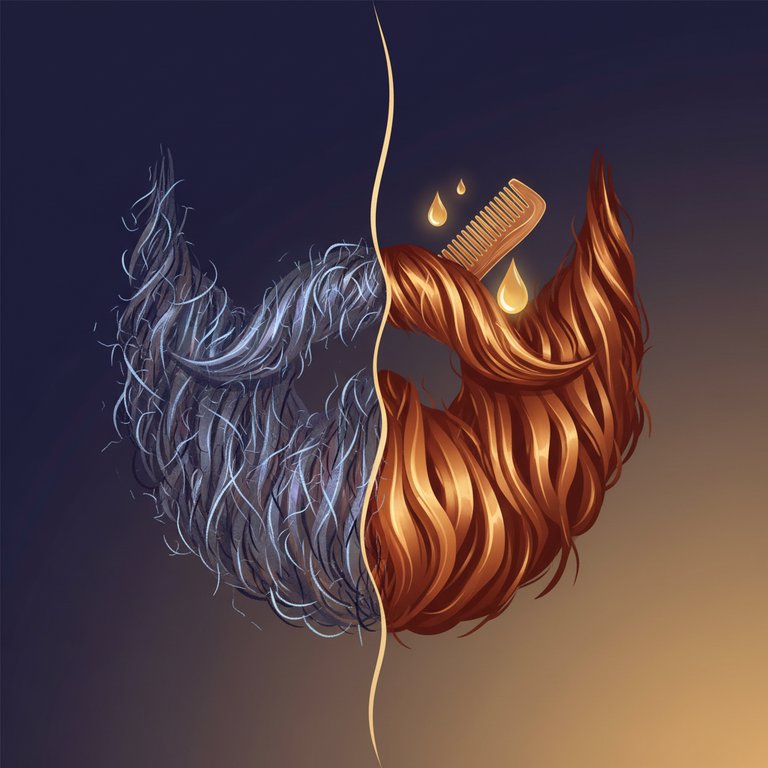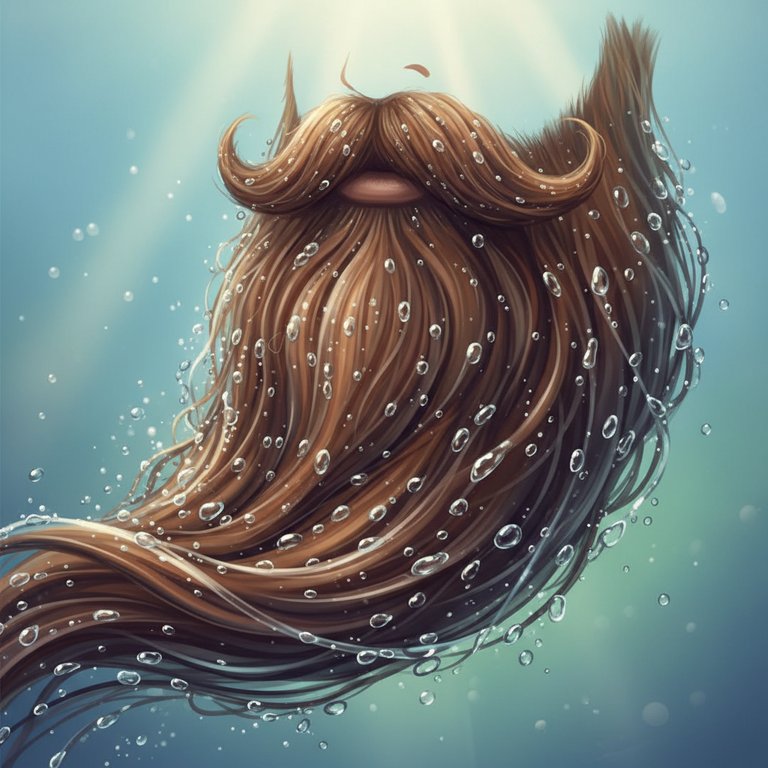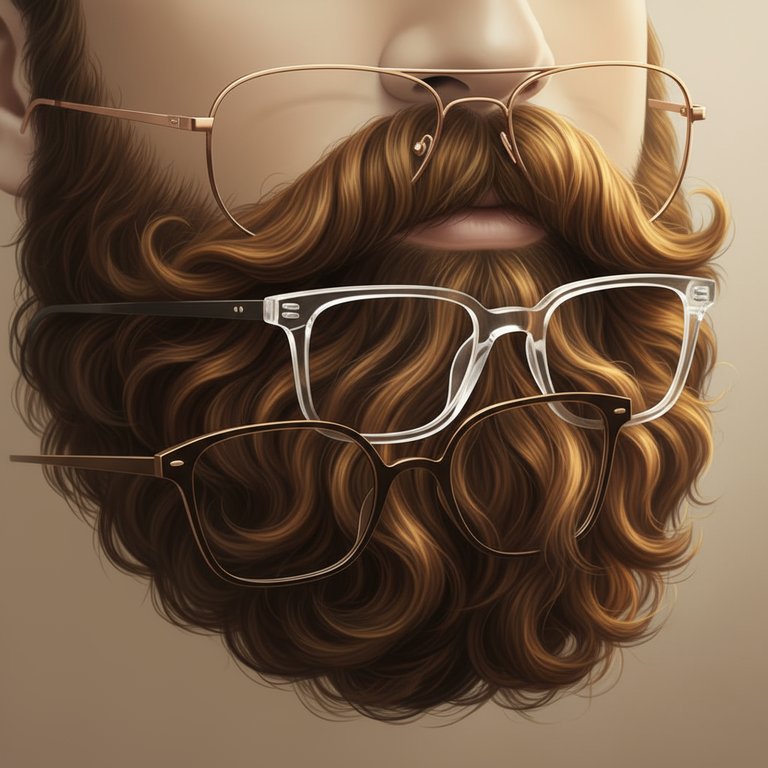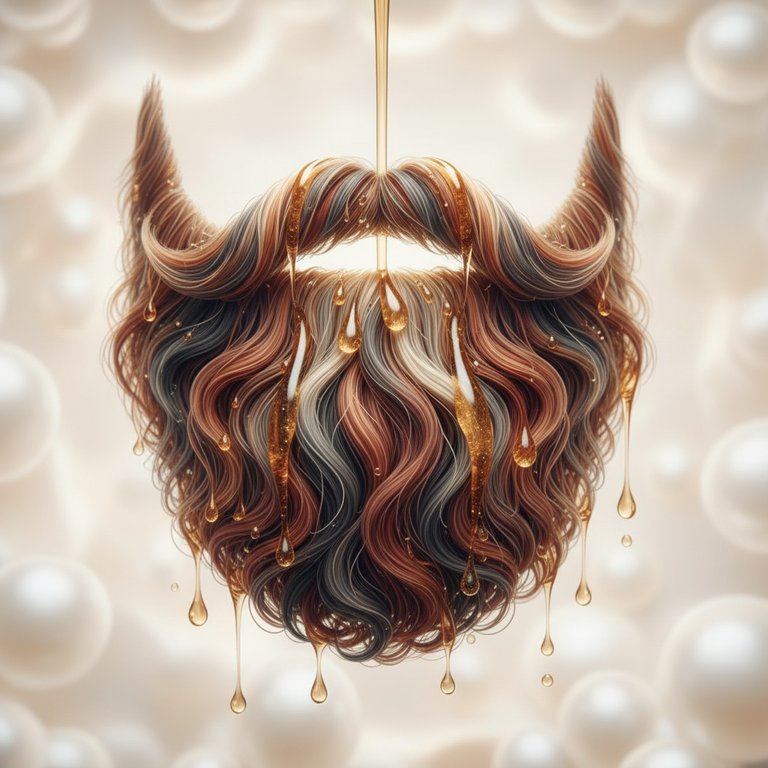Hey there, fellow beard enthusiasts! Ever wake up, look in the mirror, and find your magnificent mane looking less like a majestic waterfall and more like you've just stuck your face in a light socket? Yeah, we’ve all been there. That dreaded beard static can turn a good beard day into a frizzy, flyaway nightmare faster than you can say "static cling."
But don't fret, my friend! You're not alone in this battle. Beard static is a common, albeit annoying, phenomenon, and the good news is that it's completely combatable. In this comprehensive guide, we're going to dive deep into why your beard might be acting like a lightning rod and, more importantly, how to banish that static for good. Consider this your friendly, no-nonsense guide to a smooth, well-behaved beard.
Why Does Your Beard Get Static-y? The Science (Sort Of) Behind It
Before we can fix the problem, it helps to understand what's actually going on. Think back to your school days and those experiments with balloons and hair. Static electricity is essentially an imbalance of electric charges. When certain materials rub together, electrons (tiny negatively charged particles) can jump from one surface to another. This leaves one object with a positive charge and the other with a negative charge. And when objects with the same charge try to get close? They repel each other, causing those unruly hairs to stand on end.
For your beard, this usually comes down to a few key culprits:
- Lack of Moisture: This is probably the biggest offender. Dry air, whether it's from cold winter weather, indoor heating, or air conditioning, strips your beard of its natural moisture. When your beard is dry, it's more susceptible to gaining and losing electrons, leading to static.
- Friction: Think about brushing your beard, taking off a hat, or even rubbing your face against a pillow. These actions create friction, which can transfer electrons and build up static charges.
- Improper Tools: Certain materials, especially plastics, are notorious for generating static when they come into contact with hair. Using a cheap plastic comb on a dry beard is practically an invitation for a static party.
It's like your beard is crying out for hydration and a little TLC. When it's well-moisturized, the individual hairs are less likely to repel each other, keeping everything smooth and in place.
The Culprits: What's Making Your Beard Stand on End?
Let's break down the common scenarios and factors that contribute to beard static. Knowing these will help you identify what might be triggering your own beard's wild side.
Dry Environments
As mentioned, dry air is a major player. During the colder months, when indoor heating is blasting, the air gets incredibly dry. The same goes for air-conditioned environments in the summer. This lack of humidity in the air draws moisture out of your beard, leaving it parched and primed for static. If you live in an arid climate, you're even more prone to this.
Harsh Washing & Drying Habits
Are you using the same shampoo and conditioner on your beard that you use on your head hair? Gasp! Regular hair shampoos can be too harsh for your beard and the delicate skin underneath, stripping away natural oils and leaving your beard dry and vulnerable to static. Similarly, aggressive towel drying can create friction and rough up the hair cuticles, leading to more static.
Lack of Proper Conditioning
This is where many beard beginners stumble. Just washing your beard isn't enough. Your beard needs consistent conditioning and moisturizing. Without a good beard oil or balm, your beard's natural moisture barrier is compromised, making it an easy target for static buildup.
The Wrong Grooming Tools
Remember that plastic comb we talked about? It's a static magnet! Plastic and synthetic brushes can create a significant amount of friction and static charge, especially when used on a dry beard. Investing in the right tools is a game-changer.
Your Step-by-Step Guide to a Static-Free Beard
Ready to take control? Here's a simple, effective routine to keep your beard smooth, moisturized, and static-free. Think of it as a friendly intervention for your facial hair!
Step 1: Hydration is Key (Inside and Out)
This is foundational! Hydrate your body: Drink plenty of water throughout the day. A well-hydrated body contributes to healthier hair. Hydrate your environment: If you live in a dry climate or use a lot of heating/AC, consider getting a humidifier for your home or office. Adding moisture to the air will naturally help your beard retain its own moisture.
Step 2: Wash Wisely
- Use a dedicated beard shampoo: These are formulated to be gentle, cleaning your beard without stripping its essential oils. Aim for washing 2-3 times a week, or as needed, depending on your activity level and environment.
- Follow with a beard conditioner: After shampooing, apply a good beard conditioner. Let it sit for a few minutes to deeply moisturize, then rinse thoroughly. This helps to smooth the hair cuticles and lock in moisture.
Step 3: Condition Like a Pro with Beard Oil
This is arguably the most crucial step in preventing static. Beard oil is your beard's best friend. It mimics your skin's natural oils, providing essential moisture to both your beard hair and the skin beneath it. Apply beard oil daily, ideally after a shower when your pores are open and your beard is slightly damp (but not wet).
- Put a few drops (depending on beard length) into your palm.
- Rub your hands together to distribute evenly.
- Work the oil into your beard, starting from the roots and working your way down to the tips. Don't forget the skin underneath!
Step 4: Seal the Deal with Beard Balm or Butter
Think of beard balm or butter as a leave-in conditioner and styling aid. While beard oil focuses on deep conditioning, balm/butter helps to seal in that moisture, provide light hold, and offer an extra layer of protection against environmental dryness. Apply a small amount after your beard oil, working it through your beard evenly.
Step 5: Choose Your Tools Wisely
- Wooden or metal combs: Ditch the plastic! Wooden or metal combs are much less likely to generate static. They glide smoothly through your beard, detangling without creating frizz.
- Boar bristle brush: A good boar bristle brush helps to distribute natural oils and applied products evenly throughout your beard, further conditioning it and smoothing the hair cuticles. This reduces friction and static.
Step 6: Mind Your Drying Habits
After washing, gently pat your beard dry with a soft towel instead of aggressively rubbing it. If you use a blow dryer, always use a cool or low-heat setting and keep it moving. High heat can strip moisture and promote static. Better yet, let your beard air dry as much as possible.
Bonus Tips & Tricks from a Fellow Beardman
Beyond the daily routine, here are a few extra nuggets of wisdom I've picked up along my bearded journey:
- Carry a Mini-Moisturizer: Keep a small bottle of beard oil or a tiny tin of beard balm in your bag or car. If you feel static starting to build up during the day, a quick dab and rub can work wonders. It's like a secret weapon against flyaways!
- Consider a Static Guard Spray (Generic): Some folks find success with anti-static sprays designed for hair. Just make sure it's formulated to be gentle and won't dry out your beard. A light mist can sometimes tame rogue hairs in a pinch.
- Regular Trimming: Split ends and damaged hairs are more prone to static. Regular, light trims keep your beard healthy, neat, and less likely to frizz up. Think of it as preventative maintenance.
- Silk or Satin Pillowcases: This might sound fancy, but sleeping on a silk or satin pillowcase can significantly reduce friction on your beard (and head hair!) while you sleep. Less friction means less static when you wake up.
FAQ: Your Burning Questions About Beard Static, Answered!
Alright, let's tackle some of the common questions people have when their beard starts acting like a science experiment. These are the real questions I hear from friends and see floating around online!
Why does my beard get static electricity?
Your beard gets static electricity primarily due to a lack of moisture and friction. When your beard is dry, and you rub it against materials like clothing, plastic combs, or even just the air in a dry environment, electrons can transfer, causing an imbalance of charge. Hairs with the same charge then repel each other, leading to that frizzy, flyaway look.
Can a dry beard cause static?
Absolutely, yes! A dry beard is the number one culprit for static. When your beard lacks moisture, its individual hairs become much more susceptible to gaining or losing electrons through friction. This makes it easier for static charges to build up and for your beard to become a static magnet. Keeping your beard well-hydrated is your best defense.
What kind of comb is best for static beard?
To combat static, you should definitely ditch plastic combs. The best choices are combs made from natural materials like wood (especially sandalwood or pearwood) or high-quality metal combs. These materials are much less likely to generate static electricity as they glide through your beard. A good boar bristle brush is also excellent for distributing oils and smoothing the beard without creating static.
How often should I oil my beard to prevent static?
For most beard types and environments, applying beard oil daily is ideal for preventing static. If you live in a particularly dry climate or notice your beard getting static-y more often, you might even consider applying it twice a day – once in the morning and once before bed. Consistency is key to keeping your beard moisturized and static-free.
Does static mean my beard is lacking proper care?
While static doesn't necessarily mean your beard is "damaged," it's a strong indicator that it's lacking sufficient moisture and proper care. Think of it as your beard's way of telling you it's thirsty! Persistent static often points to dryness, which can lead to other issues like frizz and breakage over time. Addressing the static means you're giving your beard the hydration and attention it needs.
Can certain fabrics make beard static worse?
Yes, absolutely! Synthetic fabrics like polyester, acrylic, and even some wool blends are notorious for generating static electricity when they rub against your beard. Think about taking off a sweater or scarf made of these materials – instant static! Natural fibers like cotton or silk tend to be much gentler and less likely to cause static buildup.
What happens if I ignore beard static?
Ignoring beard static won't cause any serious problems, but it can lead to a few annoying issues. Primarily, your beard will look frizzy, unkempt, and difficult to style. The constant repulsion of hairs can also make your beard feel rougher. Over time, persistent dryness (which causes static) can make your beard more prone to tangles and even some minor breakage, making it harder to grow out and maintain a neat appearance. So, while not a crisis, addressing static definitely improves your beard's look and feel!
Conclusion: Embrace the Smooth, Banish the Static!
There you have it, my friend! Static beard might be annoying, but it's far from unbeatable. By understanding why it happens and implementing a consistent, thoughtful grooming routine, you can keep your beard looking its best – smooth, well-conditioned, and completely static-free. It's all about providing your beard with the moisture and care it craves, and choosing the right tools for the job.
So, go forth, armed with your beard oil, balm, and wooden comb, and conquer that static! Your beard (and your reflection) will thank you for it. Stay awesome, and keep that beard magnificent!
Disclaimer: This content is for informational purposes only and is not intended to be a substitute for professional advice. Always follow product instructions and consult with professionals for specific grooming concerns.



